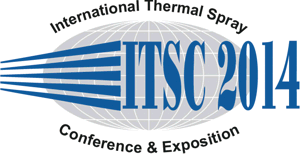
|
3738 |
|
Thursday, May 22, 2014, Hall H3 4:00 PM Arc Spraying & Laser Spraying |
|
Investigations of technological developments in nozzle design for twin wire arc spraying by means of spray plume characteristics |
|
Leif Gereon Hagen* / University of Dortmund, Germany Wolfgang Tillmann / Institute of Materials Engineering, Germany Mohamed Abdulgader/ Institute of Materials Engineering, Germany Heinrich Müller/ Department of Computer Science VII, Germany Thomas Wiederkehr/ Department of Computer Science VII, Germany |
|
In this study, different approaches are presented utilizing different nozzle attachments in twin wire arc spraying which lead to a varying deposition of the coating. A major emphasis is focused on the gas flow characteristics as well as on the spray plume characteristics which determine the particle distribution and consequently the coating deposition. In terms of three-dimensional sprayed footprint profiles described by a mono-modal spherical or irregular distribution, experiments were carried out to assess the particle distribution in the spray jet caused by atomization of the molton pool of the electrode tips. Hereby the in-flight particle behavior is influenced by the secondary gas flow as well as the slot angle of the secondary gas injection at the nozzle outlet due its effect on the concentration of the axial gas flow. In terms of acquisition of footprint characteristics depending on the handling parameter of the gun head, the effect of variation in spray angle parameters as well as varying the spray distance are examined. In addition, metallographic investigations of the coatings which were produced by using these new nozzle attachments were carried out to analyze the microstructure formation. The structured surface caused by the high volume flow of compressed air as well as determined by the state of the particle at the point of impact on the substrate was measured using a 3D profilometer system. These approaches and the knowledge, gained by these experiments, are used to coat standard geometries with different radii to evaluate the coating thickness and the applicability of structuring effects on the surface. |